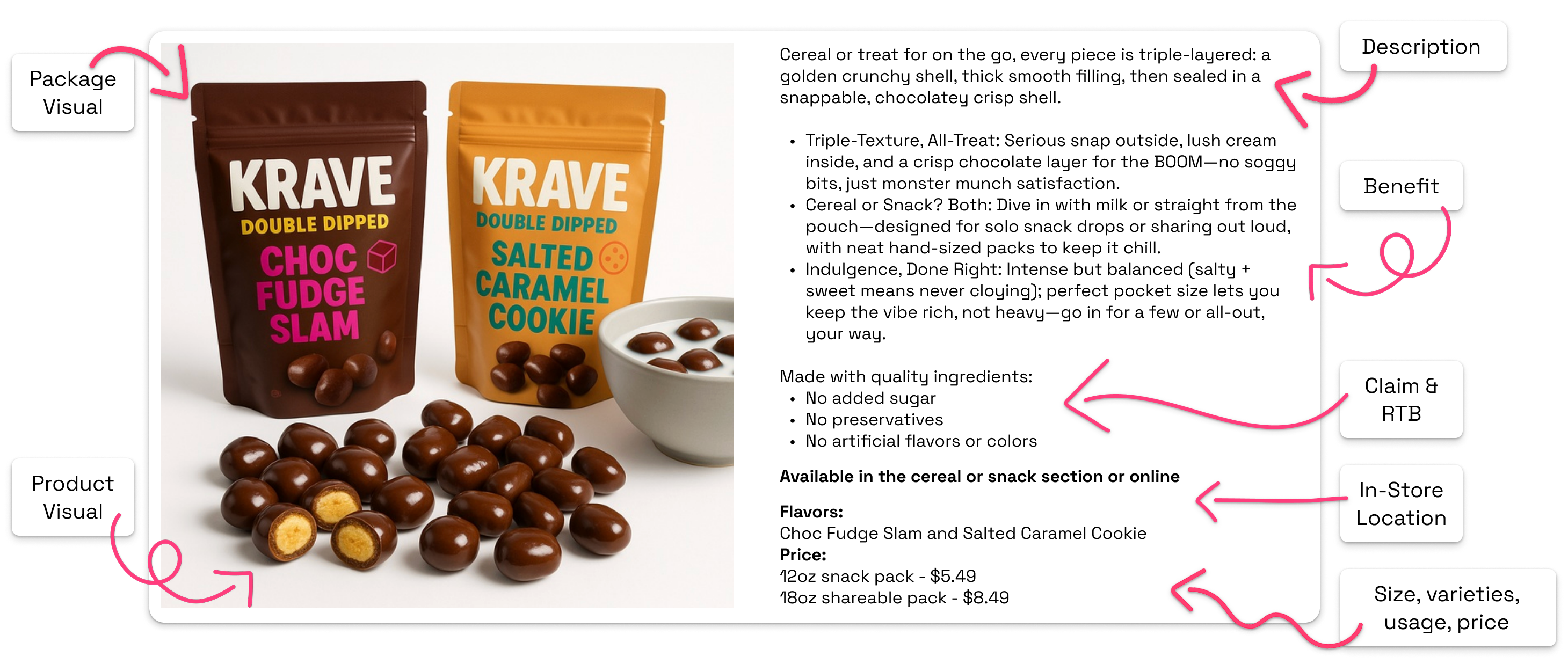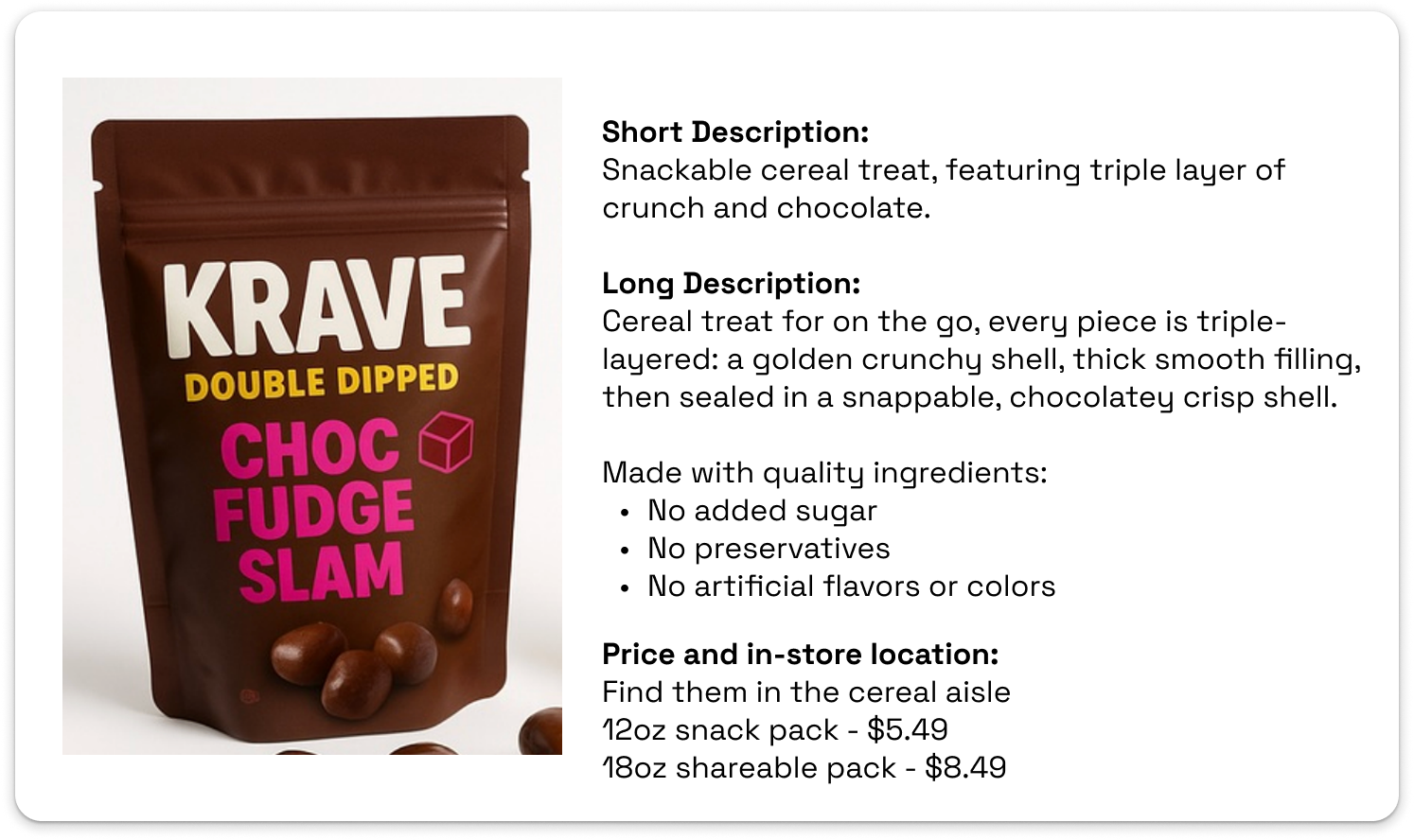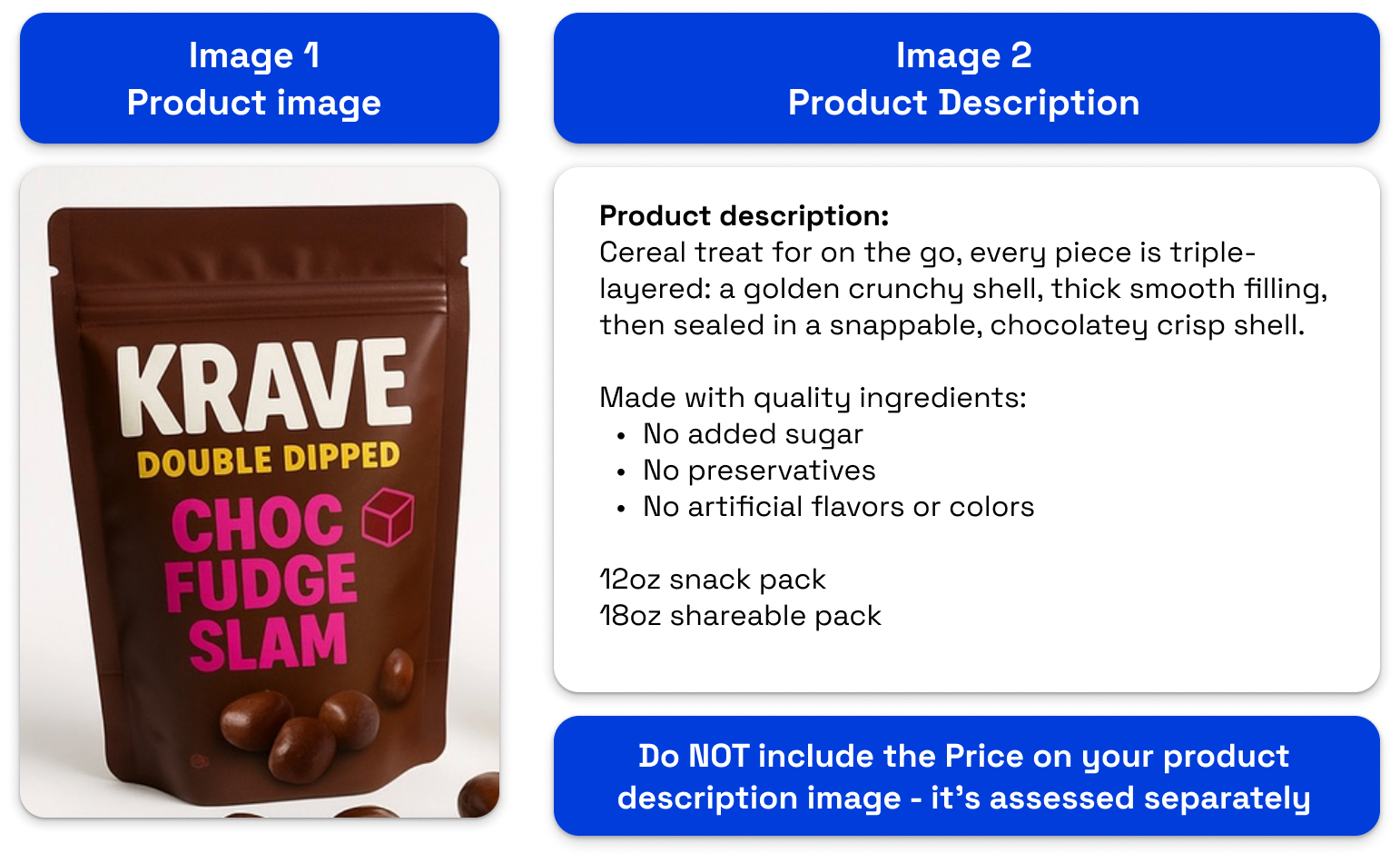Best Practices for Testing Concepts
Overview
There are many different ways to present your concepts when conducting quantitative consumer testing. Below you'll find some broad guidelines, a few tips, and some examples of how you can approach concept writing so that you can build your best ones yet!
Basic do’s and don'ts of concept writing
Do's
| Keep it brief | Include all important information. Retain the respondent’s attention with simple, concise, and clean language. Avoid unnecessary detail. |
| Be consistent | Consistency helps comprehension and builds accurate internal norms for test comparisons. |
| Use consumer language | Ensure vocabulary is commonly used by your target consumers. Relevant & conversational. |
| Convey scale | The size of the product in the photos or sketches affects respondents’ understanding of the value proposition. |
| Show usage | Provide enough context or instruction to show how the product would be used or consumed and how it benefits the audience. |
| Highlight distinctiveness | Focus on what makes the offering unique in the market or adds value. |
| Limiting text heaviness | Regardless of format, it is important to limit the text heaviness of your stimuli, since this could make it harder for respondents to read on mobile. |
Don'ts
| Don't oversell | The description should accurately describe the concept without the use of excessive superlatives. |
| Don't rely on imagination | If possible, use images to help with comprehension (photos, drawings, or stock images) |
| Don't go overboard on detail | Include a description if an image is not possible, but only write what people need to know to make an informed decision. |
| Don't use small text | Copy should be easy to read on a small screen. Respondents increasingly take surveys on their cell phones. |
| Don't use images of people | When participants don’t feel represented in the image, you risk alienation. Be mindful of the images you choose to include. |
Concept writing checklist
- Can I read it and understand it in under 20 seconds?
- Can I simply answer to this concept with "what's in it for me?"
- Is it different from what other brands are currently delivering?
- Do I believe it will deliver the benefits as promised?
- Is this something I accept or expect from this brand?
Concept elements
Generally, concepts include a combination of the elements listed below. At Zappi, the elements you should or shouldn't include will depend on the solution you are using. Refer to the solution's article for more specific stimuli guidelines.
- Description - The product's brand, name, category, and context.
- Insight - A functional or emotional tension or problem that needs solving.
- Size/Price - Weight, volume, measurements, or specific or relative price.
- Claim(s) (Benefits and RTBs can also be considered claims) - An assertion made about your product.
- Key benefit - Clear concise benefit that makes the product relevant and unique to the consumer.
- Reason to believe - Specific product attributes or features that make the benefit and/or claim believable.
- Usage - Context on how to interact with the product.
- Varieties - Product options with similar characteristics but different flavors, fragrances, or colors.
- Format - Product options with similar characteristics, but different dispensing systems.
- Visual - Drawing, photo, sketch, icon, or stock image that provides added clarity and context.
Examples of concept writing
| This is a good example of a concept you might use for Concept Test. |
|
| This is a good example of the components you'd include in a priced concept test using Prioritize It. |
|
Should I include color or worry about how realistic my early stage concept should be?
Zappi performed a research study comparing how different types of stimuli on Prioritize It perform We discovered that there are no significant differences in reference to uploading black-and-white versus color stimuli; nor are there significant differences in uploading a photo versus rendering or sketch stimuli. Similarly, there are no significant differences between choosing to upload product versus package and product stimuli (with or without claims).
| Activate It requires two types of images during configuration. The product visual and the description both need to be in an image format. This is a good example of the components you'd include in a concept test using Activate It. |
|


